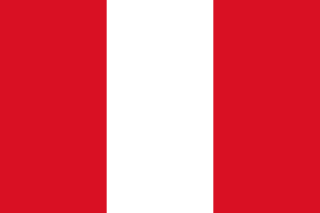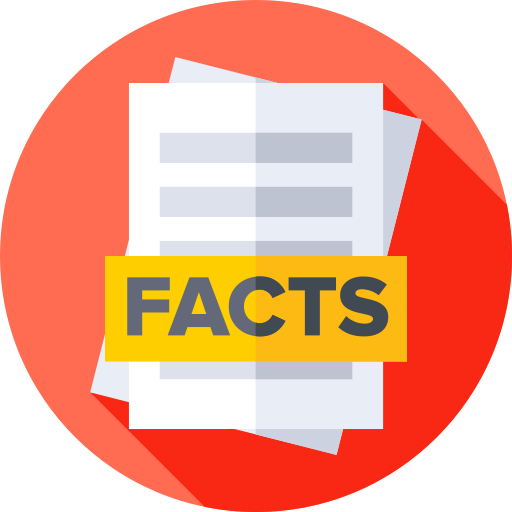Peru - Geography

Here, let us take a look at the Geography of Peru. note 1: shares control of Lago Titicaca, world's highest navigable lake, with Bolivia; a remote slope of Nevado Mismi, a 5,316-m (17,441-ft) peak, is the ultimate source of the Amazon River
note 2: Peru is one of the countries along the Ring of Fire, which is a belt bordering the Pacific Ocean that contains about 75% of the world's volcanoes and up to 90% of the world's earthquakes
note 3: on 19 February 1600, Mount Huaynaputina in the southern Peruvian Andes erupted in the largest volcanic explosion in South America in historical times; intermittent eruptions lasted until 5 March 1600 and pumped an estimated 16 to 32 million metric tons of particulates into the atmosphere, reducing the amount of sunlight reaching the earth's surface and affecting weather worldwide; over the next two-and-a-half years, millions died around the globe in famines from bitterly cold winters, cool summers, and the loss of crops and animals. Mother's mean age at first birth is 21.9 years (2013 est.) (Note: data represents median age at first birth among women 25-49), whereas, the Maternal mortality ratio is 51 deaths/100,000 live births (2023 est.)
Geographical data of Peru
| Location | Western South America, bordering the South Pacific Ocean, between Chile and Ecuador |
|---|---|
| Geographic coordinates | 10 00 S, 76 00 W |
| Map references | South America |
| Tarrain | western coastal plain (costa), high and rugged Andes in center (sierra), eastern lowland jungle of Amazon Basin (selva) |
| Natural Resources | copper, silver, gold, petroleum, timber, fish, iron ore, coal, phosphate, potash, hydropower, natural gas |
| Natural Hazards | earthquakes, tsunamis, flooding, landslides, mild volcanic activity volcanism: volcanic activity in the Andes Mountains; Ubinas (5,672 m) is the country's most active volcano; other historically active volcanoes include El Misti, Huaynaputina, Sabancaya, and Yucamane; see note 2 under "Geography - note" |
| Irrigated Land | 25,800 sq km (2012) |
| Major rivers (by length in km) | Amazon river source (shared with Brazil [m]) - 6,400 km note: [s] after country name indicates river source; [m] after country name indicates river mouth |
| Major aquifers | Amazon Basin |
| Land Boundaries | 7,062 km |
| Border Countries | Bolivia 1,212 km; Brazil 2,659 km; Chile 168 km; Colombia 1,494 km; Ecuador 1,529 km |
| Coastline | 2,414 km |
| Climate | varies from tropical in east to dry desert in west; temperate to frigid in Andes |
| Area | |
| Total Area | |
| Land Area | 1,279,996 sq km |
| Water Area | 5,220 sq km |
| comparative Area | almost twice the size of Texas; slightly smaller than Alaska |
| Maritime Claims | |
| Territorial sea | 200 nm; note: the US does not recognize this claim |
| Exclusive economic zone | 200 nm |
| Continental shelf | 200 nm |
| Elevations | |
| Highest point | Nevado Huascaran 6,746 m |
| Lowest point | Pacific Ocean 0 m |
| Mean elevation | 1,555 m |
| Land Use | |
| Agricultural land | 19.1% (2023 est.) |
| Agricultural land: arable land | arable land: 3.1% (2023 est.) |
| Agricultural land: permanent crops | permanent crops: 1.8% (2023 est.) |
| Agricultural land: permanent pasture | permanent pasture: 14.2% (2023 est.) |
| Forest | 52.9% (2023 est.) |
| Other | 28% (2023 est.) |
Population Distribution
Approximately one third of the population resides along the desert coastal belt in the west, with a strong focus on the capital city of Lima; the Andean highlands, or sierra, contain roughly half of the population; the eastern slopes of the Andes and adjoining rainforest are sparsely populated
People and Society
In Peru, the different Ethnic groups are such that we have: Mestizo (mixed Indigenous and White) 60.2%, Indigenous 25.8%, White 5.9%, African descent 3.6%, other (includes Chinese and Japanese descent) 1.2%, unspecified 3.3% (2017 est.)
| Population | |
|---|---|
| Pop growth rate | 0.48% (2024 est.) |
| Birth rate | 16.7 births/1,000 population (2024 est.) |
| Death rate | 10.9 deaths/1,000 population (2024 est.) |
| Health expenditure | |
| Physicians Density | |
| Hospital bed Density | 1.6 beds/1,000 population (2021 est.) |
| Total fertility rate | 2.15 children born/woman (2024 est.) |
| Gross reproduction rate | 1.05 (2024 est.) |
| Contraceptive prevalence rate | |
| Est married women (ages 15-49) | 51.2% (2023 est.) |
| Literacy | |
| Education expenditures | |
| Net Migration rate | -1 migrant(s)/1,000 population (2024 est.) |
| Nationality | Peruvian | Peruvian(s) |
| Languages | |
| Religions | Catholic 76%, Evangelical Christian 15.7%, no religion 5.1%, other religions 3.2% (2023 est.) |
| Age Structure | |
| 0-14 years | 25.8% (male 4,293,229/female 4,119,269) |
| 15-64 years | 66.2% (male 10,546,502/female 11,041,106) |
| 65 years and over | 8% (2024 est.) (male 1,112,825/female 1,487,318) |
| Dependency Ratios | |
| Total dependency ratio | 51 (2024 est.) |
| Youth dependency ratio | 39 (2024 est.) |
| Elderly dependency ratio | 12 (2024 est.) |
| Potential support ratio | 8.3 (2024 est.) |
| Median Age | |
| Total | 30.2 years (2024 est.) |
| Male | 29.1 years |
| Female | 31.3 years |
| Urbanization | |
| Urban population | 78.9% of total population (2023) |
| Rate of urbanization | 1.33% annual rate of change (2020-25 est.) |
| Major urban areas (Pop) | 11.204 million LIMA (capital), 959,000 Arequipa, 904,000 Trujillo (2023). |
| Sex Ratio | |
| At birth | 1.05 male(s)/female |
| 0-14 years | 1.04 male(s)/female |
| 15-64 years | 0.96 male(s)/female |
| 65 years and over | 0.75 male(s)/female |
| Total population | 0.96 male(s)/female (2024 est.) |
| Infant Motality | |
| Total | 10.8 deaths/1,000 live births (2024 est.) |
| Male | 11.9 deaths/1,000 live births |
| Female | 9.7 deaths/1,000 live births |
| Life Expectancy at birth | |
| Total population | 68.9 years (2024 est.) |
| Male | 65.4 years |
| Female | 72.7 years |
| Drinking Water Sources | |
| Improved: urban | urban: 97.5% of population (2022 est.) |
| Improved: rural | rural: 84.9% of population (2022 est.) |
| Improved: total | total: 94.8% of population (2022 est.) |
| Unimproved: urban | urban: 2.5% of population (2022 est.) |
| Unimproved: rural | rural: 15.1% of population (2022 est.) |
| Unimproved: total | total: 5.2% of population (2022 est.) |
| Sanitation facility acess | |
| Improved: urban | urban: 94.1% of population (2022 est.) |
| Improved: rural | rural: 65.9% of population (2022 est.) |
| Improved: total | total: 88.1% of population (2022 est.) |
| Unimproved: urban | urban: 5.9% of population (2022 est.) |
| Unimproved: rural | rural: 34.1% of population (2022 est.) |
| Unimproved: total | total: 11.9% of population (2022 est.) |
| Alcohol consumption per capita | |
| Total | 5.74 liters of pure alcohol (2019 est.) |
| Beer | 3.01 liters of pure alcohol (2019 est.) |
| Wine | 0.46 liters of pure alcohol (2019 est.) |
| Spirits | 2.26 liters of pure alcohol (2019 est.) |
| Other alcohols | 0.01 liters of pure alcohol (2019 est.) |
| Tobacco use | |
| Total | 5.7% (2025 est.) |
| Male | 9.5% (2025 est.) |
| Female | 2.1% (2025 est.) |
| Child marriage | |
| Women married by age 15 | 2% (2020) |
| Women married by age 18 | 14.1% (2020) |
Demographic profile
All Important Facts about Peru
Want to know more about Peru? Check all different factbooks for Peru below.









